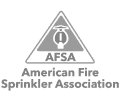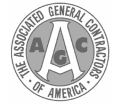How Many Fire Extinguishers Do I Need?
Portable fire extinguishers are an important part of any fire prevention program. They are the first line of defense against small fires in office buildings and commercial properties. If you act quickly, you may be able to put out a fire on the spot, restricting damage to the building and ensuring the safety of employees and customers.
Of course, the success of your fire prevention program depends on several factors, including having access to a fire extinguisher when you need it most. This begs the question: how many fire extinguishers do you need for your building? Here’s some useful information to help you answer this question.
Deciding How Many Fire Extinguishers You Need
Every public facility – from retail stores to hospitals to office buildings – is required to have at least one fire extinguisher on site. The precise number depends on the building’s size and its pre-determined fire hazard level, as set by local codes and the NFPA.
Here’s a quick guide:
- Light Fire Hazard:This is a building where most materials found inside are not combustible and are not arranged so fire can spread quickly. Examples included offices, churches, classrooms, and hotels. If you own one of these types of buildings, you need a fire extinguisher positioned near each exit and any area with a specific hazard, such as in the kitchen.
- Ordinary Fire Hazard I:A building falls into this category if it presents a slight but insignificant fire hazard. Examples include fabric stores, post offices, and dry cleaners, which have flammable materials on site but no ignition source. In these buildings, one should have to travel no more than 75 feet to reach a fire extinguisher.
- Ordinary Fire Hazard II:In this type of location, flammable materials and ignition sources are found under the same roof. Parking garages, hardware stores and stages, for instance, tend to have everything a fire needs to get started, but not without active help from a person. That’s why people working in these buildings should have access to a fire extinguisher within 50 feet at all times.
- Extra Fire Hazard I & II:In extra hazardous situations, the building has a high quantity of combustible contents surrounded by dust, lint, or other materials that help a fire spread. Buildings categorized as Fire Hazard II also have flammable or combustible liquids on site. Examples include upholstering stores, die casting facilities, modular building assembly plants, and plastics processing sites. Both rankings require fire extinguishers to be accessible every 30 to 50 feet.
- Commercial Kitchens:Because combustible cooking fuels and high heat are used on a regular basis in commercial kitchens, they belong in their own category. If you own a commercial kitchen, be sure to have a permanent fire suppression system installed. Then, place portable fire extinguishers every 30 feet.
Other Considerations
In order for your efforts to comply with these regulations to be effective, keep the following additional considerations in mind:
- Wherever you install them, your fire extinguishers must be easily accessible (not blocked by office supplies or storage).
- You need the correct fire extinguishers on hand for the type of fire most likely to occur in your establishment.
- You should regularly inspect your fire extinguishers monthly for defects.
- You should have your fire extinguishers maintained annually by a licensed fire protection company.
In the end, there clearly is not a one-size-fits-all solution to fire extinguishers. In addition to using these guidelines, it’s very helpful to work with a fire protection contractor to ensure your building is up to code and safe for your employees and customers. To learn more about our fire protection services, please contact Kauffman Co.















